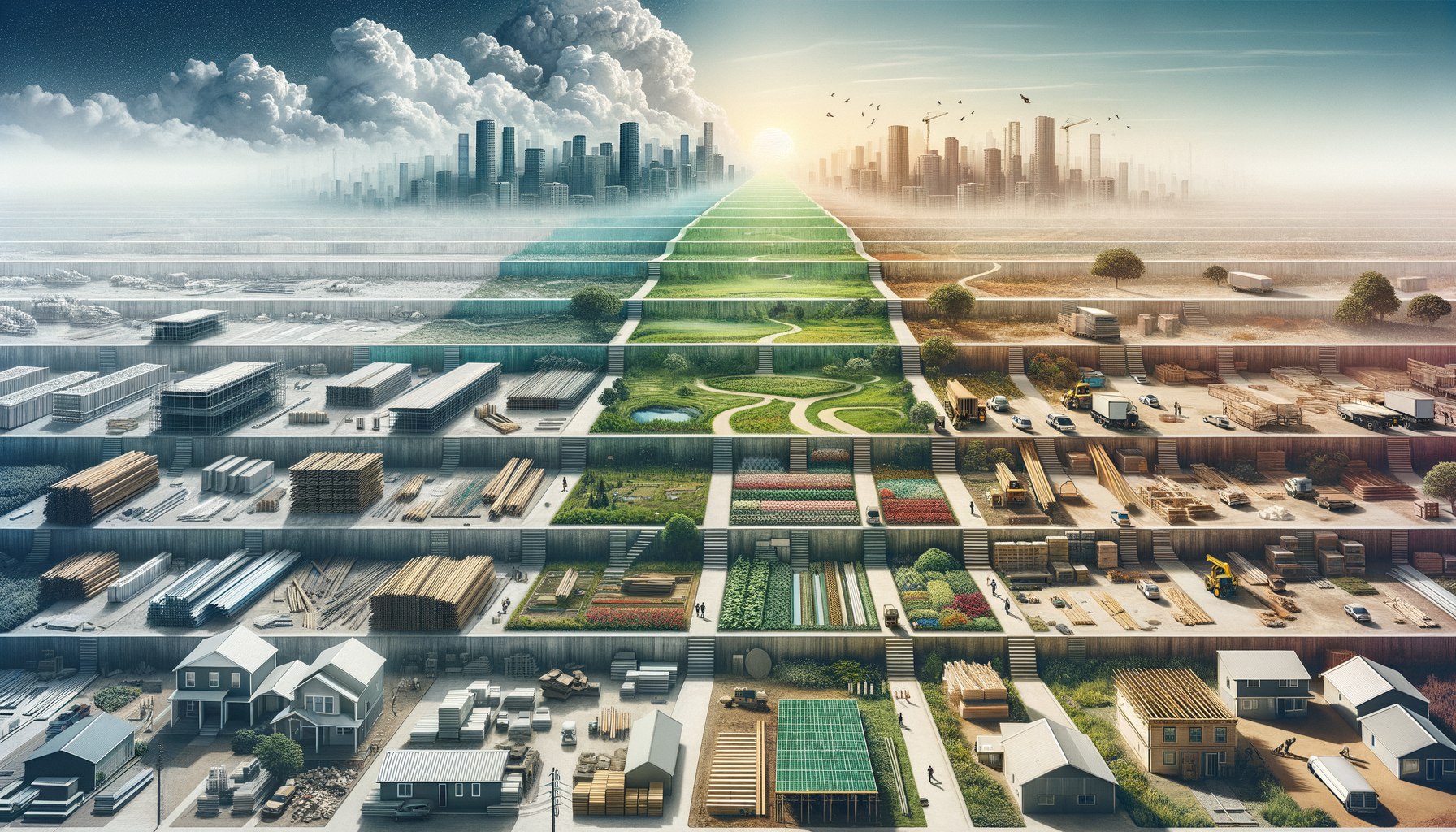“Exploring the Unexpected Surge in Homebuilder Confidence: A Deep Dive into the NAHB Report”
### Builder Confidence Takes a Dip: A Closer Look at the Current Landscape
In recent times, the housing market has become a focal point for many financial discussions, due to its substantial impact on the economy overall. One of the key indicators of the market’s health is the builder confidence index, which offers insights into the perspectives and predictions of home builders across the nation. While this index has seen better days, recent trends have shown a noticeable decrease, causing both concern and speculative analysis from industry experts.
#### Understanding the Builder Confidence Index
The builder confidence index is a vital tool crafted to gauge the outlook that builders have concerning the current and future state of the housing market. Scores are determined based on responses concerning sales conditions currently, within the next six months, and the traffic of prospective buyers. A score over 50 indicates a positive outlook, whereas below 50 suggests pessimism about market conditions.
#### The Recent Decline
This month, we’ve noticed a downturn in builder confidence, which is influenced by a combination of factors including economic policies, market conditions, and more intrinsic industry challenges.
**Economic Climate and High Interest Rates**
High interest rates have been an overarching concern for many potential home buyers. When interest rates rise, the cost to finance a mortgage increases, which in turn can dampen the enthusiasm of potential home buyers. This shift has been evident and has a direct impact on the perceptions and decisions of builders. Predictably, with fewer buyers in the market, the inventory of unsold homes can start to pile up, pressuring builders to hold off on new projects.
**Material Costs and Supply Chain Issues**
The cost of building materials has experienced fluctuations influenced by global supply chain issues. From lumber to steel to concrete, the prices have at times soared, creating budgeting nightmares for builders who rely on precalculated costs to set their pricing structures. The instability in materials costs not only makes it challenging to predict profitability but also impacts planning and scheduling of new construction projects.
**Labor Shortages**
Another significant challenge is the ongoing labor shortages in the construction industry. Skilled labor is integral to the building process, and without a sufficient workforce, projects can face delays or increased labor costs, as companies are forced to pay more to attract and retain workers. This shortage undermines the capability of builders to complete projects on time and within budget, which in turn affects their overall confidence.
#### Regional Perspectives
The impact of these issues is not uniform across the United States; different regions face unique challenges based on local economic conditions and real estate markets.
– **Northeast:** Often dealing with higher property costs and tighter regulatory environments, builders in the Northeast are particularly sensitive to shifts in market dynamics that affect buyer sentiment and purchasing power.
– **Midwest:** Typically benefiting from more stable market conditions, the Midwest experiences moderate effects. However, issues like labor shortages and material costs are universally challenging.
– **South:** The South, with its ongoing population growth and generally favorable climate, tends to have a resilient building market, though it still faces the nationwide issues of labor and materials.
– **West:** The West faces specific challenges, including environmental regulations and the high cost of living. These factors frequently contribute to a more volatile market, sensitive to economic shifts and interest rate changes.
#### Looking Forward
While the current decrease in builder confidence might seem alarming, it’s essential to view these trends within a broader context. The housing market is notoriously cyclical, and various factors can shift the scales in either direction. What’s important is to monitor how builders adapt to these challenges.
**Innovation and Technology**
One avenue through which the industry is fighting back is through technological advances. Innovations such as modular and pre-fabricated homes are starting to gain traction. These methods can significantly reduce building times and costs, making it easier to manage budget fluctuations and labor shortages.
**Policy Interventions**
Government policy also plays a crucial role in shaping the landscape. From subsidies for renewable energy to adjustments in interest rates or tax incentives for new home buyers, policy interventions can either buffer or exacerbate the challenges facing builders.
**Market Adaptability**
Builders are also exploring new markets and diversifying their offerings. From luxury homes to multi-family units, the adaptability to switch focus based on market demands is crucial. Furthermore, there’s a growing trend towards sustainable building, which not only aligns with global needs but may also attract a new demographic of environmentally conscious buyers.
### Conclusion
While the dip in builder confidence is not to be overlooked, neither is it a signal for impending doom. Instead, it serves as a reminder of the myriad factors that influence the housing market. By understanding these factors and how they interplay, stakeholders from builders to buyers can better navigate the complexities of real estate. As we continue to track these trends, the resilience and innovation within the industry may yet steer us toward a more stable and prosperous market environment.

